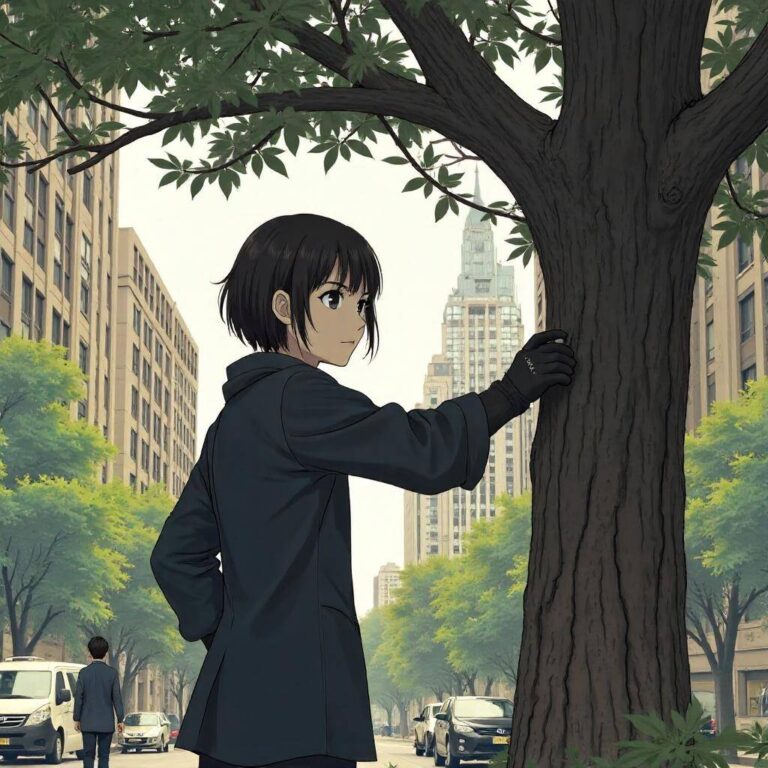Question from a reader:
I believe that accidents can occur due to poor visibility caused by untrimmed street trees. If such an incident were to happen, would the administration responsible for managing those street trees be held accountable? It makes me a little sad to think that the mayor, as the administrator, might not realize this issue unless a lawsuit is
filed.
Pruning Street Trees and Administrative Responsibility
When accidents occur due to poor visibility caused by untrimmed street trees, the administration responsible for their management may be held accountable. It is necessary to analyze this issue from multiple perspectives, including legal, psychological, ethical, and social responsibility. Below, I will explain the details.
Legal Background
In Japan, the management of street trees is entrusted to local governments. Street trees are considered “public property,” and their management comes with administrative responsibilities. If an accident occurs, the negligence of the administration may be questioned. Specifically, the following legal grounds can be considered: 1. Negligence of public officials: Administrative staff have a duty to manage street trees appropriately. If this duty is not fulfilled, negligence may be established. 2. State Compensation Law: If an accident occurs and administrative negligence is recognized, damages can be claimed based on the State Compensation Law. This law clearly stipulates the responsibilities regarding the management of public property. 3. Tort liability under civil law: If street trees obstruct visibility and an accident occurs, there may also be tort liability under civil law.
Psychological Perspective
Psychological factors are significantly involved in the background of accidents. The attention and reaction of drivers influence the occurrence of accidents, and the impact of the urban environment on people’s behavior and psychology cannot be ignored. 1. Obstruction of view and psychological impact: When street trees obstruct visibility, drivers may experience a lack of information, increasing the likelihood of making poor judgments. In particular, stress and tension can lead to decreased attention. 2. Environmental psychology: The presence of street trees also significantly affects the surrounding atmosphere and psychology. A green environment promotes relaxation, but on the other hand, obstruction of view can cause stress.
Ethical Considerations
The management of street trees comes with ethical responsibilities. In particular, protecting the safety of residents is an important duty, and the administration should fulfill this responsibility. 1. The life and safety of citizens: The administration must prioritize the life and safety of citizens. If street trees are not pruned appropriately, it endangers the safety of the public. 2. Accountability: The administration should be accountable to citizens for its decisions and actions. When issues arise, transparent information provision is required.
Regulatory Situation
Regulations regarding the management of street trees vary by local government. Generally, laws related to urban planning and green space management apply. 1. Urban Planning Law: There are guidelines based on the Urban Planning Law regarding the installation and management of street trees. This requires appropriate management. 2. Green Space Conservation Ordinances: In some municipalities, green space conservation ordinances have been established, setting specific standards for the management of street trees.
Specific Examples and Case Studies
There have been past cases where accidents occurred due to obstruction of view by street trees. For example, in a certain city, street trees were not pruned properly, causing a driver to lose visibility at an intersection, resulting in an accident. In this case, the victim sought damages from the administration, leading to a lawsuit. In such cases, the administrative management responsibility is questioned, and compensation is often recognized as a result.
Practical Advice
There are many things citizens can do regarding the management of street trees. The following methods can help protect their rights. 1. Inquiries to the administration: If street trees are not being pruned, it is important to submit opinions requesting improvements to the administration. 2. Collaboration with local residents: By collaborating with neighboring residents and sharing issues, pressure can be increased on the administration. 3. Utilizing information: It is necessary to research information regarding local green space management and demand appropriate management based on laws and ordinances.
Conclusion
Accidents caused by the lack of pruning of street trees need to be analyzed from legal, psychological, and ethical perspectives. The administration has a responsibility to manage appropriately to protect the safety of citizens. It is also important for citizens to actively take action to fulfill their responsibilities. I encourage you to share your opinions and experiences on this topic in the comments. I believe that through discussions in our community, we can build a better society.



